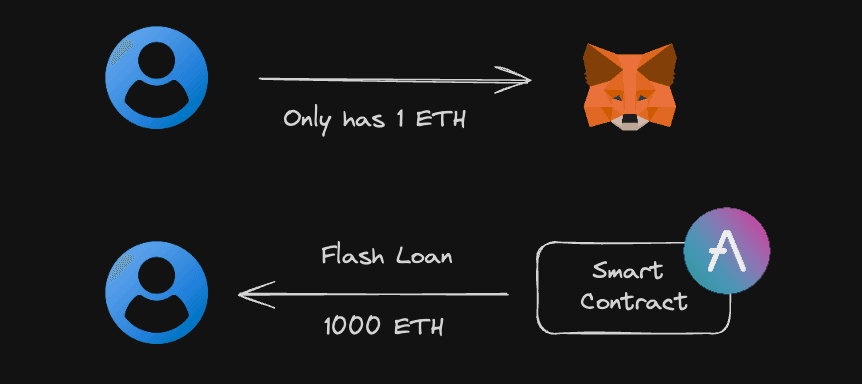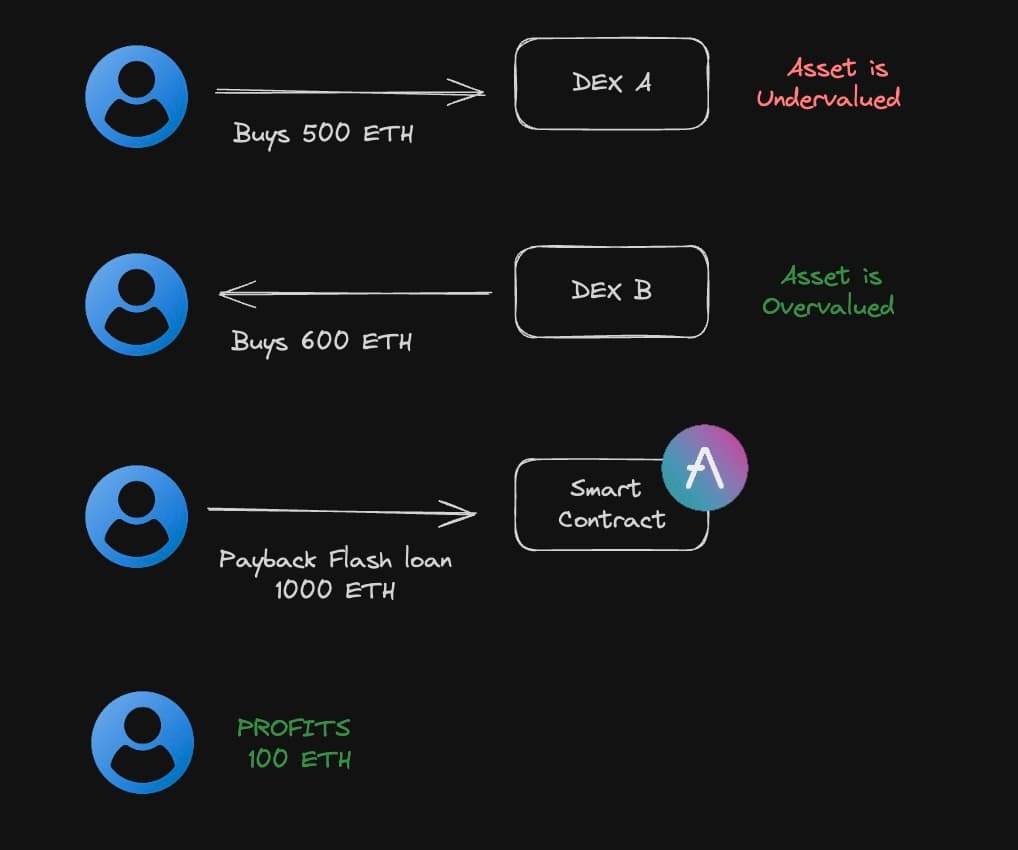In the realm of decentralized finance (DeFi), opportunities often arise that demand swift action to capitalize on them. One such opportunity is arbitrage: when a token on Dex A can be bought at a lower price than it's being sold for on Dex B, there's potential for significant profit, which scales with the capital at your disposal. In traditional finance, this kind of opportunity is typically reserved for the wealthy. However, DeFi enables broader access, allowing anyone to leverage flash loans to momentarily become a major player in the market.
A flash loan enables borrowing from a liquidity pool without collateral. This means you can access funds beyond your current holdings to exploit arbitrage opportunities and potentially reap substantial gains in a single transaction.
How does it work?
Liquidity in DeFi pools is provided by liquidity providers who deposit funds to earn profits from transaction fees. Standard pools charge fees per token swap, while those offering flash loans charge fees per loan. Liquidity providers receive pool tokens representing their share and can withdraw their funds, plus fees, at any time.
Once funds are available, users can initiate loans. The sole requirement for withdrawing a loan is to return the borrowed funds plus fees to the contract within the same transaction. Failure to do so will revert the transaction, maintaining the network's unchanged state.

With funds now in their possession, users can utilize them as needed. To capitalize on arbitrage opportunities, users purchase tokens on Dex A using the loaned amount. Subsequently, they sell these tokens on Dex B at a higher value. Finally, users repay the loan plus fees to the flash loan contract, keeping the profit generated from the opportunity.

Are flash loans a vulnerability?
Flash loans themselves are not vulnerabilities. Instead, they are a feature provided by decentralized finance (DeFi) protocols that allow users to borrow assets without collateral as long as the borrowed amount is returned within the same transaction. However, flash loans can be used by attackers to exploit vulnerabilities or weaknesses in smart contracts or protocols.
Flash loan attacks
Arbitrage, though not inherently malicious, can be perceived as an exploit since it leverages price discrepancies across decentralized exchanges. However, flash loan attacks are a genuine concern and have led to substantial financial losses.
Flash Loan Attack Types:
- Arbitrage: Attackers can exploit price discrepancies between different decentralized exchanges (DEXs) using flash loans for arbitrage trades. Though not always malicious, this can result in losses for legitimate traders.
- Price manipulation: Attackers can use flash loans to manipulate cryptocurrency prices by artificially inflating or deflating their value, leading to significant losses for traders with orders based on these distorted prices.
- Smart contract exploits: Attackers can exploit vulnerabilities in DeFi smart contracts, such as reentrancy bugs or integer overflow errors, using flash loans. This allows them to steal funds from the protocol or carry out other attacks.
Real-World Cases Of Flash Loan Attacks
- Balancer: $2.5 million (August 2023)
- Curve Finance: $70 million (July 2023)
- Euler Finance: $197 million (March 2023)
- Cream Finance: $130 million (October 2021)
- Harvest Finance: $34 million (October 2020)
Prevent Flash Loan Attacks
- Reentrancy Guards: Implement reentrancy guards to prevent functions from being called repeatedly in the same transaction.
- Decentralized Oracles: Use decentralized price oracles (e.g., Chainlink) that aggregate data from multiple sources to resist manipulation.
- Conduct Thorough Audits: Regularly audit smart contracts with reputable security firms to identify and fix vulnerabilities.
Practical Examples
- Aave: Uses time-weighted average price (TWAP) oracles and strict liquidation policies to minimize the risk of price manipulation via flash loans.
- Compound: Employs decentralized oracles and collateralization mechanisms to reduce the impact of flash loan attacks.
- Uniswap: Incorporates TWAP and decentralized pricing mechanisms to mitigate price manipulation risks.
- Synthetix: Implements multi-sig governance for critical updates and relies on decentralized oracles for price feeds.
- Balancer: Uses circuit breakers and multi-sig approvals for critical changes to prevent rapid, unauthorized changes in the protocol.
Final Thoughts
I view flash loans as a tool that opens access to opportunities in DeFi, enabling any user to capitalize on opportunities that would otherwise be inaccessible. While malicious actors can exploit flash loans to target protocols, these risks can be mitigated. The greatest advantage of DeFi is the ability to create innovative tools like flash loans and continually adapt the ecosystem to reduce the likelihood of exploits.
Connect with me on social media: